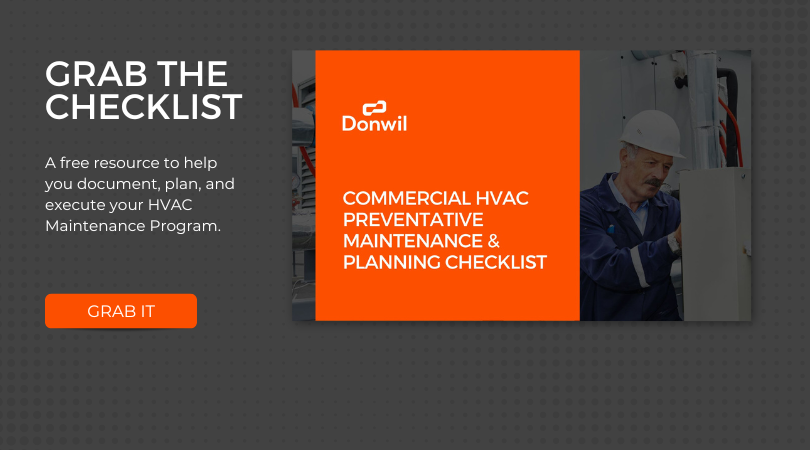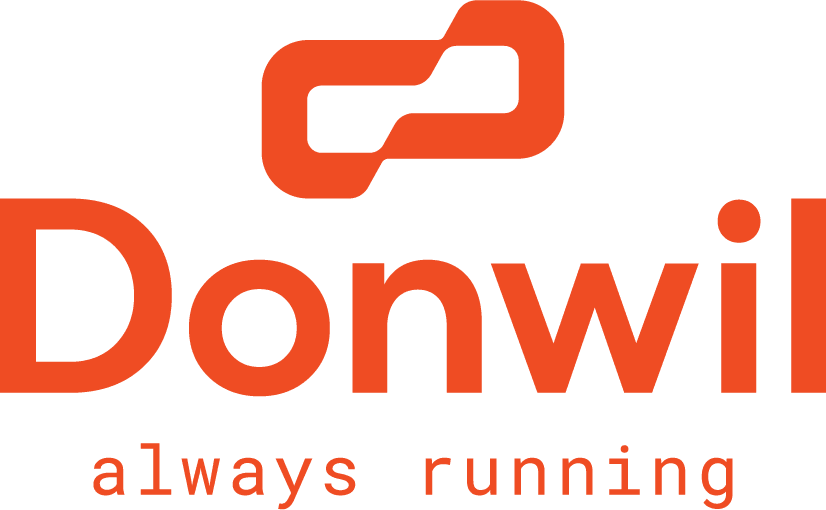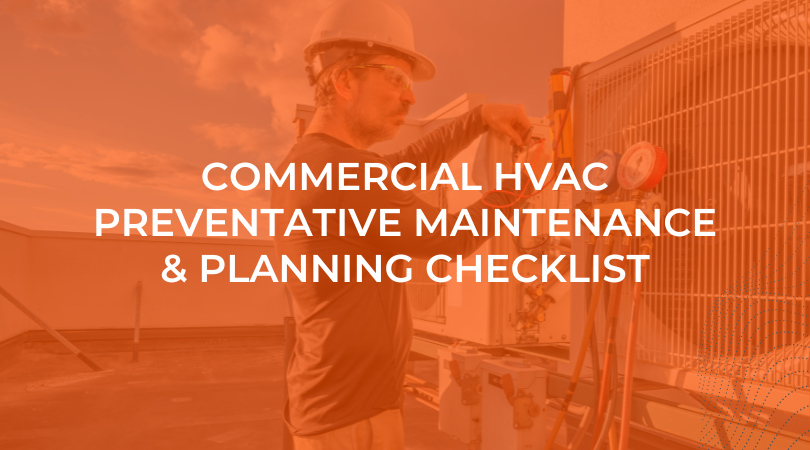A commercial HVAC system is a complex system that needs routine maintenance to reach optimal performance.
To help you get the most out of your HVAC systems, we’ve created a helpful checklist to help you plan all the necessary steps for a proactive HVAC maintenance strategy.
Pillar 1: Planning & Documentation
Without a plan, how do you know what you need to do and when? The best HVAC maintenance strategies help you stay organized, save money, and maximize performance for years to come. Consider these planning and documentation tips.
Start a Record of Maintenance
If you haven’t already, start a record of all maintenance activities, including dates, times, and who performed the work. Records will help you track your system’s maintenance history and ensure that all warranty requirements are met.
It will help you avoid doing unnecessary work and also aid in troubleshooting should a problem arise. A simple logbook can suffice, or you can use an electronic database. Just make sure that you update it regularly.
Keep Track of Inventory Management
Be sure to keep an inventory of all the parts and components of your HVAC system. You’ll want to include details like serial numbers, warranties, filters, belts, compressors, and more. Keeping an inventory will help you know when it’s time to replace certain parts and will also help you mitigate unexpected break-it fix-it costs.
Pillar 2: Preventive Maintenance
One of the best ways to avoid costly repairs is to perform preventive maintenance on your HVAC systems. Some preventive maintenance elements should be inspected monthly, seasonally, or annually.
Here are a few things you should do as part of your preventive maintenance:
Visual Inspections
When to Check: Monthly, Quarterly, Annual
Perform a visual inspection of your building and its HVAC systems on a monthly, quarterly, and annual basis. It will help you to catch potential problems early on. Look for things such as leaks, loose wires, or damaged parts. If you see any issues, address them before they become a problem.
Air Filters
When to Check: Monthly
The air filter is an essential part of the HVAC system. It helps to remove contaminants from the air, including dust, pollen, and pet dander. A clogged air filter can reduce the system’s performance and lead to premature wear. Be sure to check the air filter on a monthly basis and replace it every three months.
Coils and Refrigerant Lines
When to Check: Yearly
The coil and refrigerant lines help circulate refrigerant throughout the air conditioning system. The coils help to evaporate and condense the refrigerant, while the refrigerant lines transport it between these two points. These lines are essential and must be kept clear of any obstructions.
Inspect the coils and refrigerant line on a yearly basis. Look for signs of leaks, corrosion, or damage. If you see any issues, make sure to have them repaired immediately.
Compressor
When to Check: Yearly
The compressor helps circulate coolant throughout the system. A damaged compressor can lead to a loss of cooling power and increased energy costs. Be sure to have the compressor inspected on a yearly basis.
Drain Pans and Lines
When to Check: Monthly
The drain pan collects water that condenses on the evaporator coils. The drain line carries this water away from the air conditioner to a draining system or outside. If the drain pan or line becomes clogged, it can cause water to back up into the air conditioner, damaging it.
Empty the drain pans monthly to prevent water damage and the growth of mold and mildew.
Thermostat
When to Check: Monthly
Inspect your thermostats regularly. Are they providing an accurate temperature reading? If they are not, you could be spending too much money on heating or cooling your building. Check the thermostat and batteries on a monthly or quarterly basis.
Outdoor Unit
When to Check: Monthly
On commercial buildings, check the outdoor units quarterly and yearly.
Inspect the unit for signs of damage, leaks, or blockages. If you see any issues, make sure to have them repaired immediately.
Indoor Unit
When to Check: Yearly
On commercial buildings, check the indoor units yearly. Inspect the unit for signs of dust buildup or leaks.
Pillar 3: Education & Training
HVAC technology is always changing, and new products are constantly on the horizon. As these systems evolve, it’s critical that you stay up-to-date with the latest HVAC information and best practices.

That’s a Wrap
Following these steps on a regular basis will help you keep your commercial HVAC system running smoothly and efficiently, saving you money in the long run.
If you’re looking for out-of-the-box HVAC solutions, connect with the experts at Donwil. Whether it’s equipment procurement, maintenance, or upgrades – we’ve got your bases covered. Contact us today to learn more.

